- Details
- Hits: 1009
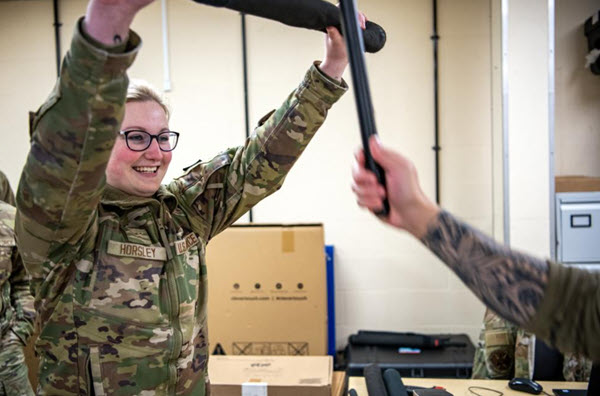
RAF Alconbury, United Kingdom. (February 7, 2023): In this photo by Staff Sergeant Eugene Oliver, an Airman from the 423d Security Forces Squadron demonstrates a baton block during a non-lethal combat qualification course at RAF Alconbury. The course teaches defenders the skills and knowledge to properly detain a suspect using non-lethal combative methods.
The term 'less-lethal' designates a wide array of weapons, ranging from the traditional police baton to encompass pepper spray, tear gas, electric-shock weapons such as Tasers TM, rubber and plastic bullets, water cannon, and eve acoustic weapons.
The goal of non-lethal military weapons is to incapacitate targeted personnel or materiel immediately, while minimizing fatalities or permanent injury to personnel and property. Non-lethal weapons are used to counter personal attacks by disabling the attacker and is intended to have reversible effects on personnel.
The 423rd Air Base Group’s mission is to support operations at the Joint Intelligence Operations Center Europe Analytic that is responsible for over 50 countries in Europe, 33 Sub-Saharan and West African countries, and the Middle East.
The U.S. Air Force currently has over 35,000 military and civilians serving under the European Command.
- Details
- Hits: 1080
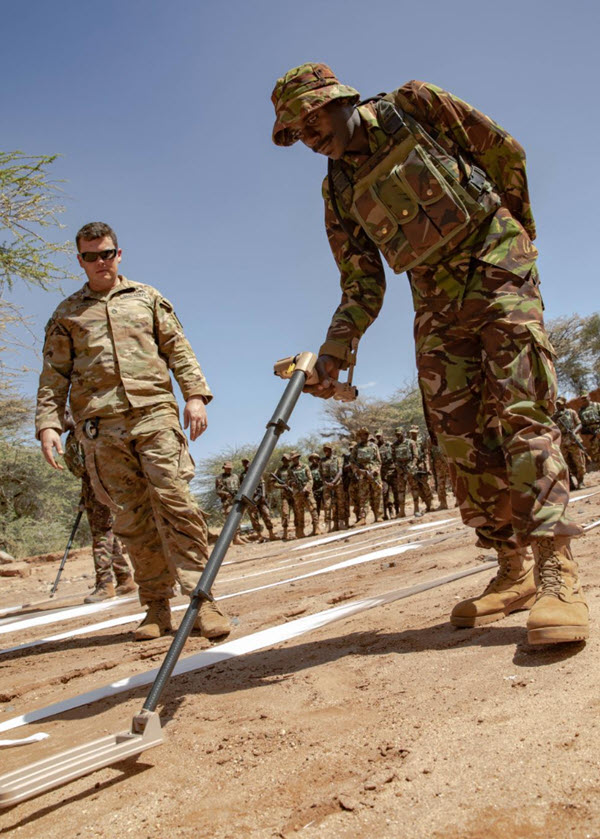
ISIOLO, KENYA. (February 13, 2023): In this photo by Sgt. 1st Class Steven Eaton, U.S. Army Staff Sgt. Isaac Bocanegra, a team leader with the 720th Ordnance Company (Explosives Ordnance Disposal), observes a soldier from the Kenyan Defense Forces using a ground search metal detector during counter-improvised explosive device training while participating in exercise Justified Accord 23.
Led by the Southern European Task Force Africa, the maneuver brings together U.S. Forces and Kenyan Defense Forces to build readiness, prepare regional partners for United Nations and African Union mandated missions, and to increase multinational interoperability between armies.
More than 20 countries from 3 continents conducted command post exercises, field training, live fire, and maritime operations. Partner nations also held special operations and cyber courses and several humanitarian and civic assistance projects are also planned. Kenya will host activities primarily in Nairobi and Isiolo, with additional events planned in Uganda, Rwanda, Botswana, and Djibouti.
Headquartered in Vicenza, Italy, the U.S. Army Southern European Task Force Africa is comprised of the 173rd Airborne Brigade, the 207th Military Intelligence Brigade, the 414th Contracting Command, and the 509th Signal Battalion offering commanders a diverse range of capabilities.
- Details
- Hits: 1504
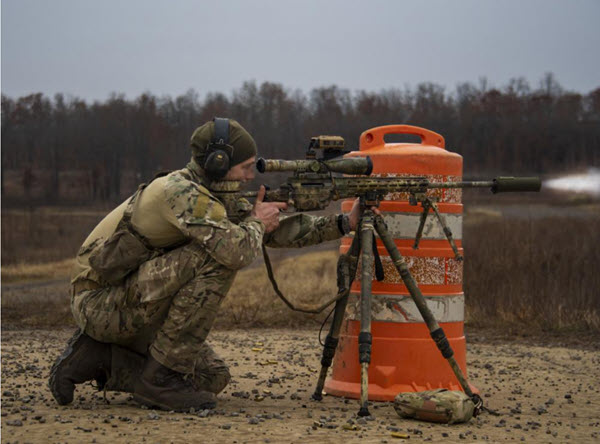
Fort Chaffee, Arkansas. (February 13, 2023): In this photo by Senior Airman Brandan Hollis, a National Guard soldier fires his weapon during competition at the 52nd Winston P. Wilson and 32nd Armed Forces Skill at Arms Meeting Sniper Championships hosted by the National Guard Marksmanship Training Center at Fort Chaffee, Arkansas. Thirty-five military sniper teams competed for bragging rights at the event hosted by the U.S. Army National Guard Sniper School at the Joint Maneuver Training Center.
Military snipers from all over the world were evaluated on sniper abilities and weaponry in a combat-oriented setting. The events tested the sniper’s skills at long and medium ranges using a variety of weapons including rifles, carbines, and pistols. The competitors must navigate a series of real-world scenarios under simulated operational conditions to those found on modern battlefields.
Considered the “Super Bowl” of shooting events, the competition was open to all U.S. military branches and international shooters including Army, Marine Corps and Special Forces teams.
- Details
- Hits: 1075
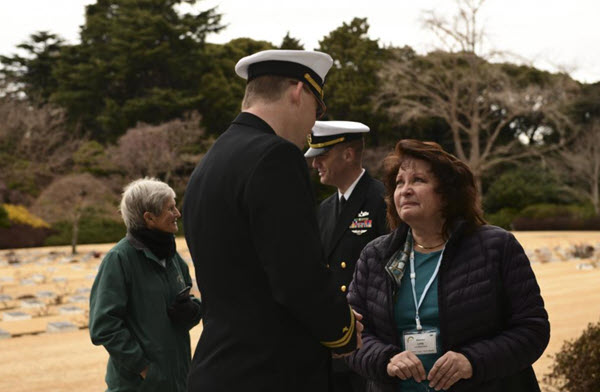
YOKOHAMA, Japan (February 14, 2023) In this photo by MC2 Ashley M.C. Estrella, U.S. Navy Chaplain Lt. Junior Grade Nicolas Tobin, assigned to Commander Fleet Activities Yokosuka, hands flowers to a service-veteran family member during a war memorial ceremony for the Japanese/POW(s) Friendship Program at Yokohama Commonwealth War Cemetery. The cemetery includes a large urn containing the ashes of 335 Sailors, Soldiers, and Airmen from the United States, the British Commonwealth, and the Kingdom of the Netherlands, who died as POWs in Japan. The ceremony is sponsored by the Japanese Ministry of Foreign Affairs and Commander, Navy Region Japan, bringing families of U.S. prisoners of war to Japan for a week-long reconciliation tour.
This special event with family members of former American Prisoners of War is at the invitation of the Japanese Ministry of Foreign Affairs as part of a cultural diplomacy program that started in 2010. The Japanese/POW Friendship Program seeks to promote a mutual understanding between the Japanese and American people by inviting former POWs, their family members, and caregivers to Japan as a gesture of reconciliation.
The Yokosuka base is located on 568 acres 43 miles south of Tokyo at the entrance of Tokyo Bay and is one of the most strategically important bases in the U.S. military. The base has a population of 24,500 military and civilian personnel making it the largest overseas U.S. Naval installation in the world.
- Details
- Hits: 2950
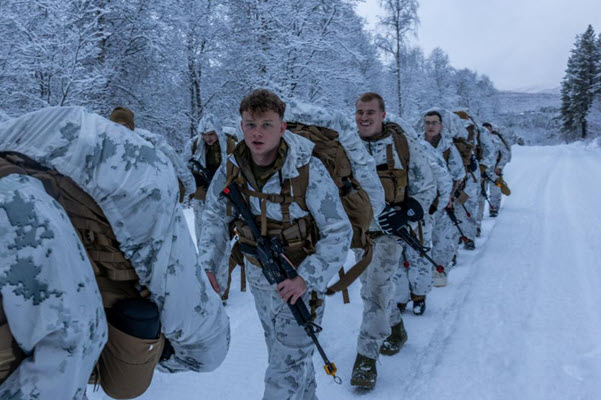
Setermoen, Norway, (January 29, 2023): In this photo by Sgt. Christian M. Garcia, U.S. Marines with Combat Logistics Battalion 2, Combat Logistics Regiment 2, 2nd Marine Logistics Group get a good look at the Norwegian countryside during a 5-kilometer hike during Marine Rotational Force- Europe 23. The American Marines train in various real-life exercises including mountain warfare and military to military engagements.
Marine Rotational Force-Europe 23 is an annual meeting of U.S. and Norwegian military units to confront Russian aggression on Europe’s northern flank. The American presence acknowledges Norway as a key strategic ally located on the Russian border and, hopefully, a new member of the NATO alliance.
For the Marines, Norway provides an ideal cold weather environment to test men and equipment to the maximum. With over 63,000 miles of coastline, Norway offers numerous options for realistic training for amphibious landings in an often frozen environment. Inland, Marines patrol with their Norwegian counterparts much as they would do should war break out.
The II Marine Expeditionary Force consists of four Expeditionary Units, each with their own aircraft wings and ground combat forces.
- Details
- Hits: 1019
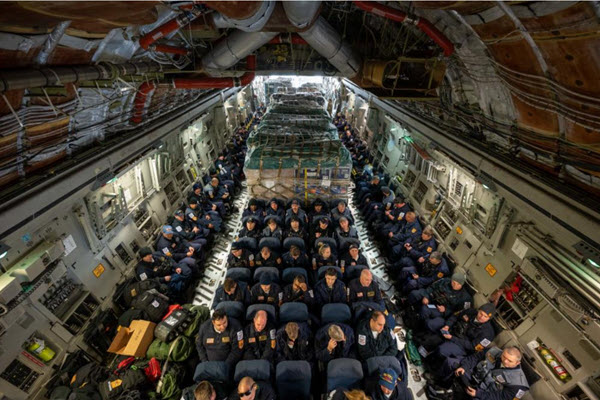
Dover Air Force Base, Delaware. (February 7, 2023): In this photo by Senior Airman Faith Barron, members of the Fairfax County Virginia Urban Search and Rescue Team board a C-7 Globemaster III headed to the earthquake zone as part of the U.S. Agency for International Development (USAID) emergency humanitarian response. The devastating impacts in Türkiye have stretched world resources to their limit as they struggle to cope with the worst earthquake to hit the region in nearly a century.
On February 6, a magnitude 7.8 earthquake struck central southern Türkiye, close to the Syrian border, followed by dozens of violent aftershocks. The earthquakes have resulted in over 45,000 deaths and has displaced millions.
USAID deployed a Disaster Assistance Response Team (DART) to lead the U.S. government’s response efforts to conduct disaster assessments, assist with search and rescue operations, and work with partners on the ground to save lives.
The Urban Search and Rescue team pictured above is a part of the Federal Emergency Management Agency’s urban search and rescue task force based in Fairfax County Virginia and sponsored by the Fairfax County Fire and Rescue Department.
Established in 1986, the task force is composed of over 200 specially trained career and volunteer fire and rescue personnel with expertise in the rescue of victims from collapsed structures following natural disasters or terrorist attacks.


